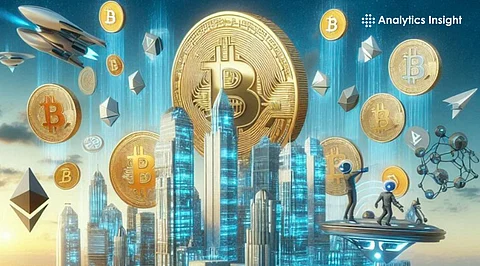

The tokenization of real-world assets (RWAs) is gaining significant traction, offering a fresh perspective on investing and asset management. By converting physical assets like real estate, art, and commodities into digital tokens, tokenization enhances liquidity, accessibility, and security.
This development expands investment opportunities, enabling a broader range of investors to participate in previously inaccessible markets.
Tokenization is turning physical assets into digital tokens on a blockchain. Tokens can represent ownership of assets such as real estate, stocks, or even art and can be traded, purchased, or sold. The greatest advantage of tokenization is fractional ownership, where investors can own a fraction of an asset instead of purchasing it whole.
Tokenization breaks down most of the barriers present in conventional asset investing. In conventional markets, substantial capital is typically needed to be able to invest in high-value assets, but tokenization makes it possible for small investors to invest in these markets by buying fractions of assets.
Traditional assets like real estate and art are notoriously illiquid, with it being difficult for investors to sell or transfer ownership rapidly. Tokenization solves this issue by enabling assets to be broken down into smaller, tradable units. This provides access to enhanced liquidity, with assets able to trade on blockchain platforms without having to wait for lengthy approval periods.
For instance, tokenized property websites enable investors to purchase and sell fractions of a property, affording flexibility as well as immediate access to an investment for investors all around the world.
One of the most powerful aspects of tokenization is its ability to democratize investment. Luxurious real estate, rare art, etc., are attractive investment asset classes, but they are mostly too expensive for the average investor. Tokenization will allow for fractional ownership of these high-value assets, making it possible for small investors to invest in them and adding yet another layer of access, which is wealth creation.
Democratization of investment is relevant not only to developed markets but also to emerging markets with limited access to traditional asset classes. New tokenized asset classes can provide options for people in those markets to utilize their savings in investment products that will expose them to international investment.
Blockchain technology is central to tokenization, creating a safe, transparent, and unalterable transaction ledger. Each transaction on a blockchain is logged and cannot be changed, ensuring ownership records are trustworthy and clear. Transparency minimizes the threat of fraud and boosts trust in tokenized asset markets.
In the execution of smart contracts and procedures, such as the transfer of denominations or payment of dividends, are automated to improve efficiency. With security and optimization as parameters, blockchain therefore stands to be the apt choice for tokenized asset management.
With more traction, institutional investors are looking at tokenization. Some large-scale financial institutions, such as JPMorgan and Apoll, are looking at opportunities with tokenized assets and the blockchain. These collaborations indicate a larger institutional interest in using tokenization technology to move the market forward.
The tokenized RWA market is likely to grow exponentially over the next few years. Estimates for the RWA market are in the tens to hundreds of billions. As institutional adoption occurs, tokenization will become a widely accepted investment vehicle that increases liquidity for RWA assets and efficiency and access to these assets.
Though it holds promise, tokenization is not without its challenges. The largest challenge of all is regulatory uncertainty. In most areas of the world, the legal status of tokenized assets remains in limbo, and governments are struggling to establish how these assets should be defined, taxed, and traded.
Interoperability between platforms is another challenge. Because blockchain technology is in its developmental stage, various platforms might use incompatible standards and protocols. It will be important for these tokenized assets to ensure that they can be traded freely across various platforms.
Another challenge for tokenization is investor education. Most investors remain uninformed about blockchain and tokenized assets. Financial institutions and blockchain platforms need to invest in educational programs for investors so that they can learn about the risks and rewards of these assets.
Tokenization is changing the investment sector by offering liquidity and accessibility to investments. The avenue of fractional ownership, coupled with disrupting conventionally implicated barriers to market entry, liberates people and makes it accessible for more people to invest in valuable assets.
As blockchain technology advances and institutional investment grows, tokenization will be a key element of modern investment strategy. Early adopters who invest in tokenization today might just be at the vanguard of a financial revolution transforming the nature of our engagement with assets and markets.
